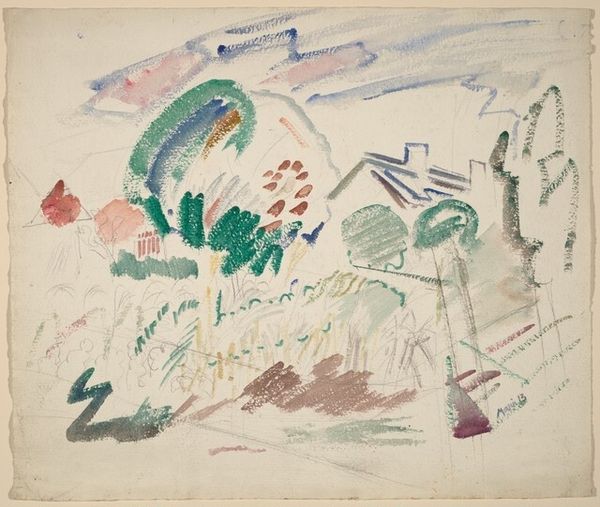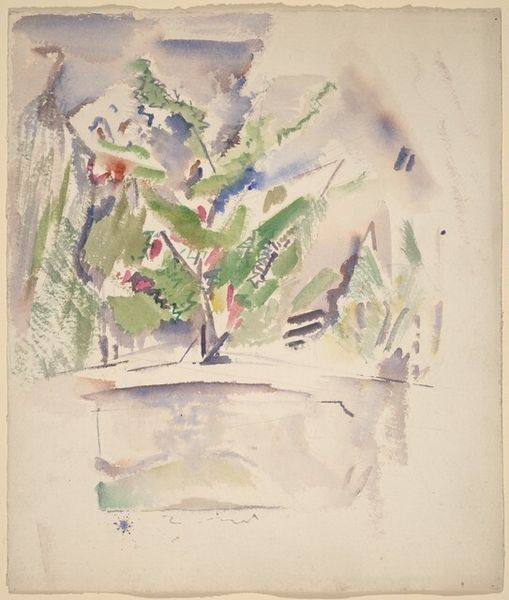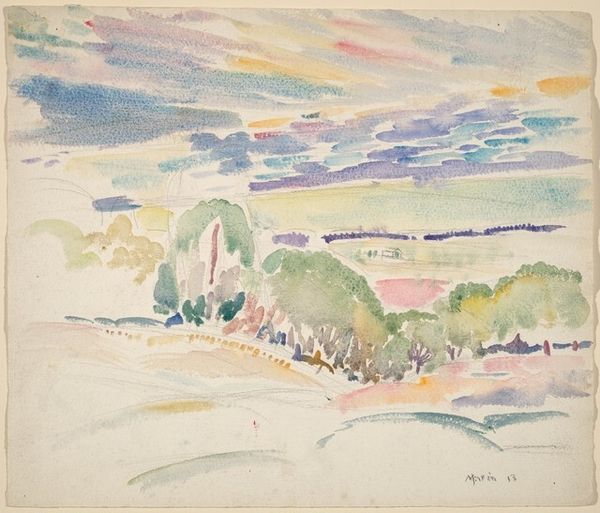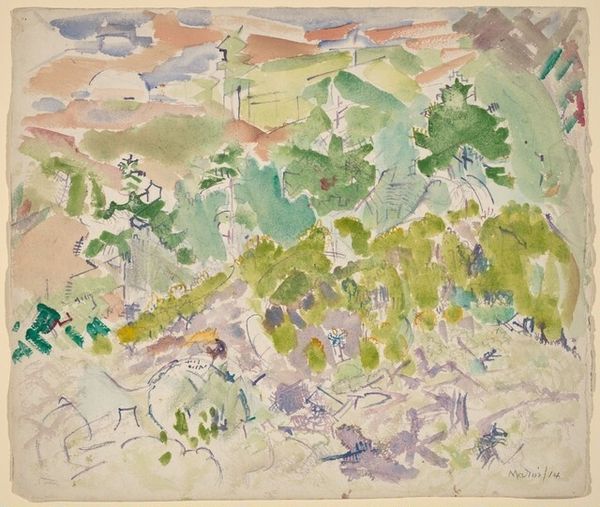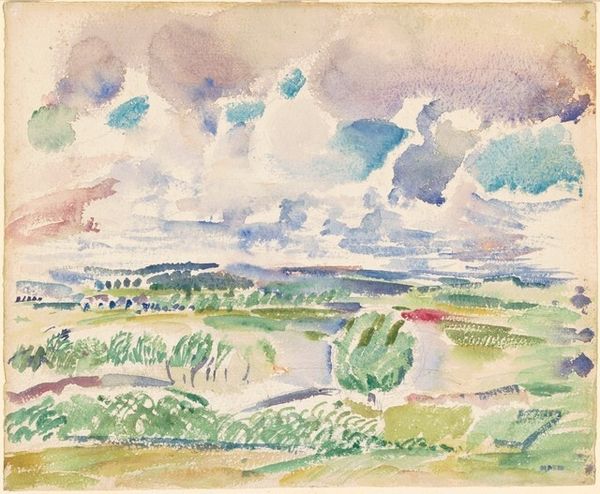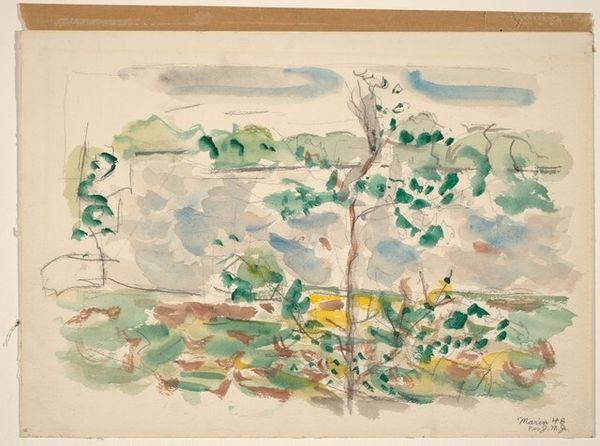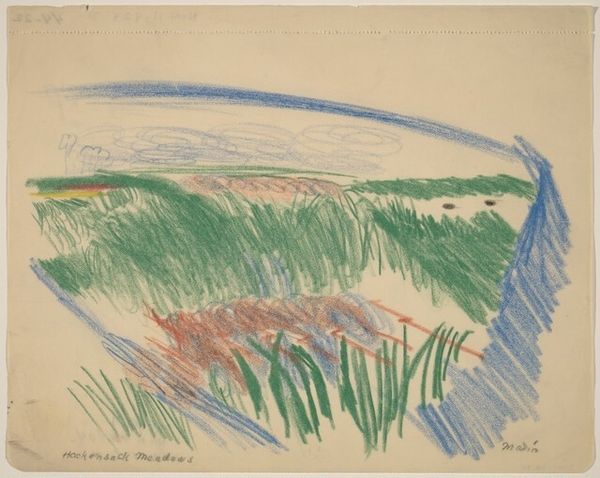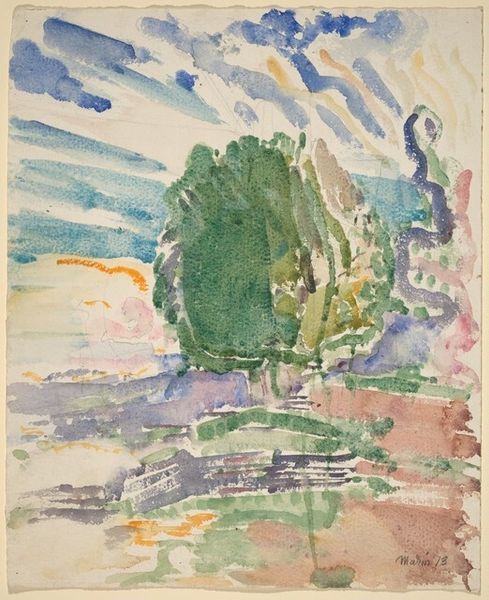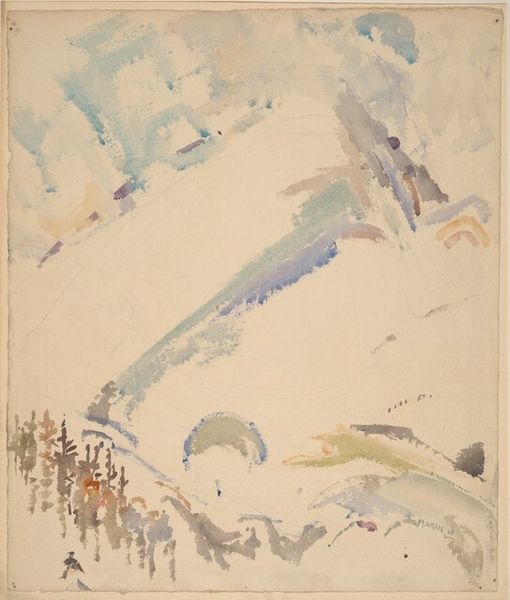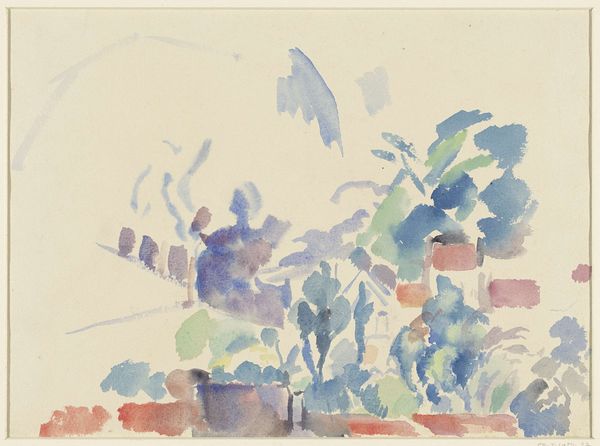
Dimensions: overall: 43.1 x 35.7 cm (16 15/16 x 14 1/16 in.)
Copyright: National Gallery of Art: CC0 1.0
Editor: Here we have John Marin’s “New England Landscape” from 1914, a watercolor drawing bursting with light. It feels almost aggressively joyful. What do you see in this piece? Curator: The joyousness you perceive is understandable. But consider 1914. Europe was teetering on the brink of World War One, and even in America, there were burgeoning anxieties around industrialization and social change. Marin's choice to depict a seemingly untouched, almost idyllic landscape is not simply aesthetic. It is an active choice—a commentary, perhaps, on what was being lost. What does that high-key color palette evoke for you, knowing the context? Editor: That's a darker perspective, but I see your point. The bright colors now read as maybe escapist or even… desperate? I guess I had interpreted the quick brushstrokes as energetic, but perhaps they show anxiety instead. Curator: Precisely. Think about the broader artistic movements of the time. Marin was associated with the Stieglitz circle, a group deeply engaged with European Modernism. Yet, they sought to define a uniquely American artistic identity. Was their vision accessible, and for whom? Editor: So, this landscape isn’t just a pretty picture; it’s a statement about American identity, created during a period of global instability? It makes you wonder about whose America is being represented and who has access to that ideal. Curator: Exactly. Marin offers not just a visual experience but also a socio-political one, if we allow it. Seeing art this way enriches how we connect with historical and current global topics. Editor: Thanks, I'll definitely think differently about this now. It's way more layered than I initially realized.
Comments
No comments
Be the first to comment and join the conversation on the ultimate creative platform.
